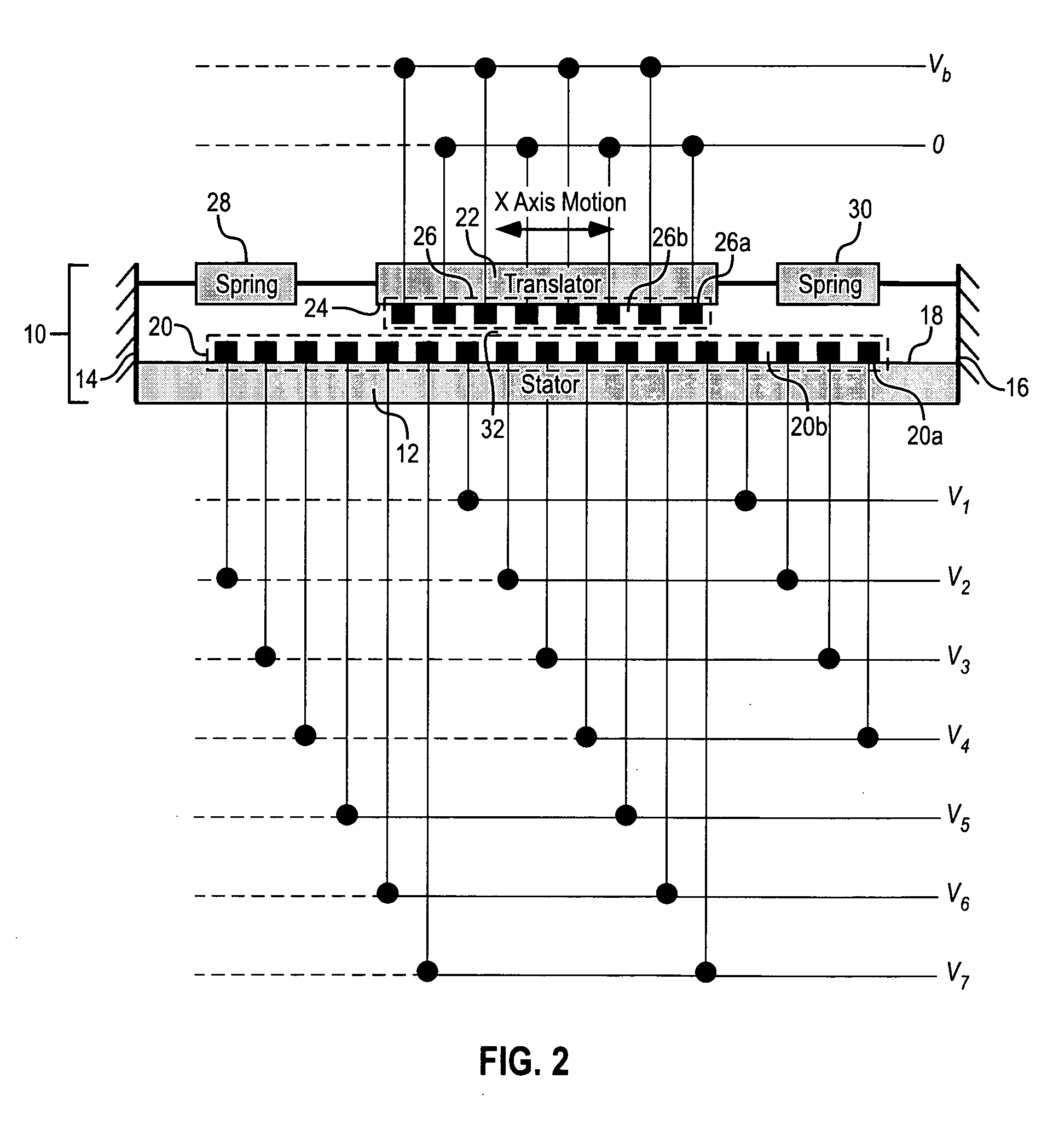System for controlling an electrostatic stepper motor
a stepper motor and system technology, applied in the direction of electronic commutators, dynamo-electric converter control, electric/electrostrictive device details, etc., can solve the problem of not knowing the relative position of the translator electrode with respect to the stator electrode, and achieve the effect of minimizing the effect of resonant frequency changes, removing positional dependence from the motor state, and improving the accuracy of estimated positions
- Summary
- Abstract
- Description
- Claims
- Application Information
AI Technical Summary
Benefits of technology
Problems solved by technology
Method used
Image
Examples
Embodiment Construction
[0024] Before the invention is described in detail, it is to be understood that, unless otherwise indicated, this invention is not limited to a particular circuit or components thereof, as such may vary. It is also to be understood that the terminology used herein is for purposes of describing particular embodiments only, and is not intended to be limiting.
[0025] As used in the specification and the appended claims, the singular forms “a,”“an” and “the” include plural referents unless the context clearly dictates otherwise. Thus, for example, reference to “a spring” includes a single spring as well as a plurality of springs; reference to “an electrode” includes a single electrode as well as multiple electrodes.
[0026] In this specification and in the claims that follow, reference will be made to a number of terms that shall be defined to have the following meanings, unless the context in which they are employed clearly indicates otherwise:
[0027] The term “micro motor” refers to a ...
PUM
 Login to View More
Login to View More Abstract
Description
Claims
Application Information
 Login to View More
Login to View More - R&D
- Intellectual Property
- Life Sciences
- Materials
- Tech Scout
- Unparalleled Data Quality
- Higher Quality Content
- 60% Fewer Hallucinations
Browse by: Latest US Patents, China's latest patents, Technical Efficacy Thesaurus, Application Domain, Technology Topic, Popular Technical Reports.
© 2025 PatSnap. All rights reserved.Legal|Privacy policy|Modern Slavery Act Transparency Statement|Sitemap|About US| Contact US: help@patsnap.com



